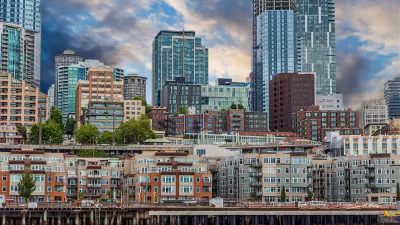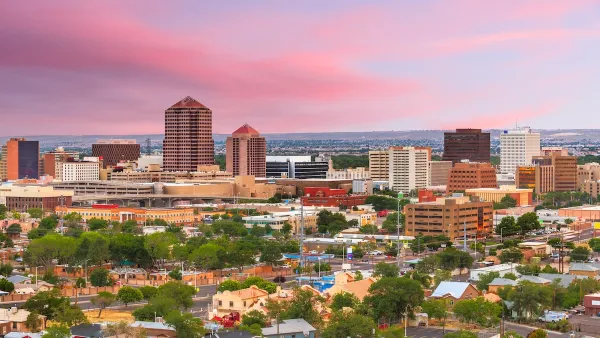Bipartisan support, robust funding, and access to comprehensive data are keys to the success of programs that assist unhoused veterans.

In an op-ed in Next City, Beth Sandor explains how cities have managed to reduce veteran homelessness despite a rise in the overall unhoused population — and what lessons these strategies offer for solving the broader crisis.
According to Sandor, 12 U.S. communities have achieved “functional zero” veteran homelessness. “The hallmarks of these successes in reducing veteran homelessness — including data, funding, and the power of coordination — provide a roadmap for U.S. communities to make homelessness rare and brief for everyone.”
Sandor writes that accurate data about unhoused residents is the first step in understanding people’s needs. “The Department of Veterans Affairs (VA) provides a good starting point by knowing each unhoused veteran that accesses its services — including names, demographic data, locations, health conditions, types of services received and needs beyond housing, such as psychiatric care or legal help.” Similar systems for all unhoused people could help allocate resources more effectively.
In addition to more robust funding, programs aimed at reducing veteran homelessness also benefit from deeper collaboration across levels of government and political parties. “That same cross-party buy-in is necessary for reducing homelessness across all populations.”
Sandor concludes, “The path forward is an understanding of each person experiencing homelessness — and the financial resources and collaboration that can bring each person home.”
FULL STORY: We’ve Cracked the Code on Veteran Homelessness. We Can Solve Homelessness the Same Way.

Maui's Vacation Rental Debate Turns Ugly
Verbal attacks, misinformation campaigns and fistfights plague a high-stakes debate to convert thousands of vacation rentals into long-term housing.

Planetizen Federal Action Tracker
A weekly monitor of how Trump’s orders and actions are impacting planners and planning in America.

In Urban Planning, AI Prompting Could be the New Design Thinking
Creativity has long been key to great urban design. What if we see AI as our new creative partner?

King County Supportive Housing Program Offers Hope for Unhoused Residents
The county is taking a ‘Housing First’ approach that prioritizes getting people into housing, then offering wraparound supportive services.

Researchers Use AI to Get Clearer Picture of US Housing
Analysts are using artificial intelligence to supercharge their research by allowing them to comb through data faster. Though these AI tools can be error prone, they save time and housing researchers are optimistic about the future.

Making Shared Micromobility More Inclusive
Cities and shared mobility system operators can do more to include people with disabilities in planning and operations, per a new report.
Urban Design for Planners 1: Software Tools
This six-course series explores essential urban design concepts using open source software and equips planners with the tools they need to participate fully in the urban design process.
Planning for Universal Design
Learn the tools for implementing Universal Design in planning regulations.
planning NEXT
Appalachian Highlands Housing Partners
Mpact (founded as Rail~Volution)
City of Camden Redevelopment Agency
City of Astoria
City of Portland
City of Laramie





























